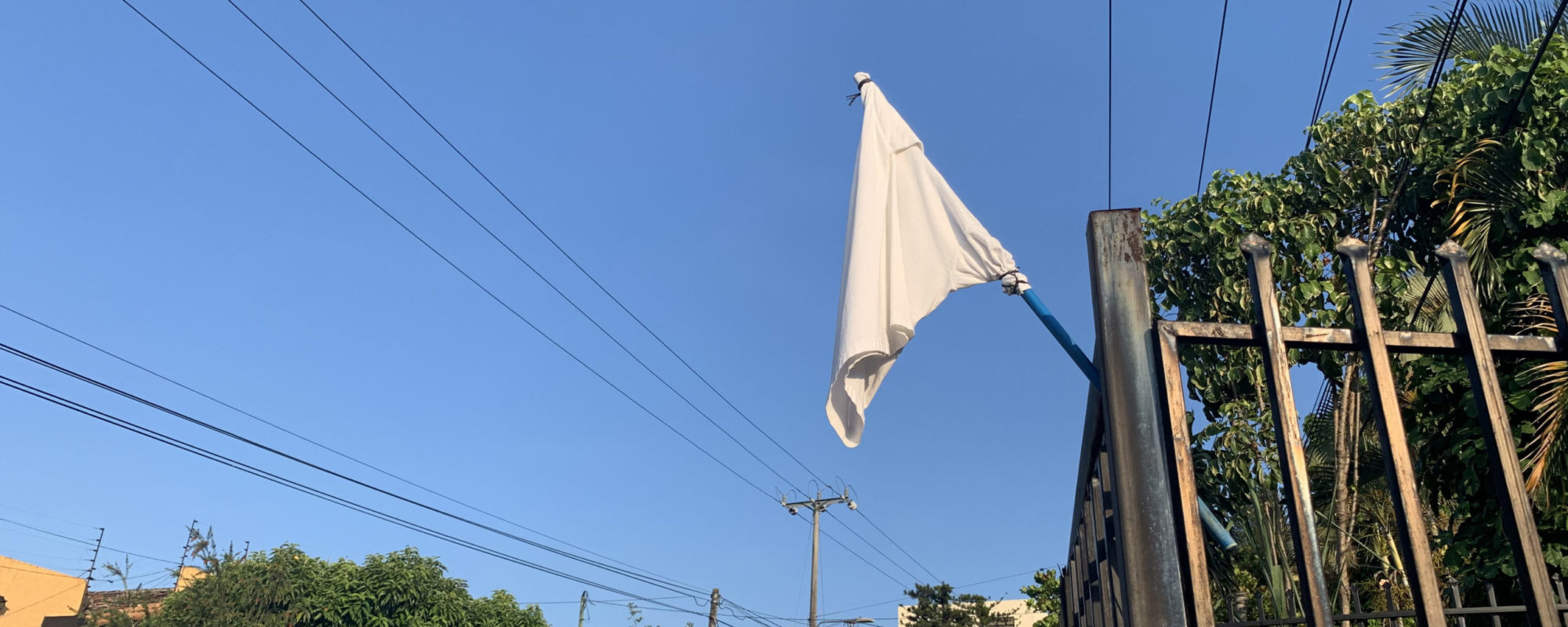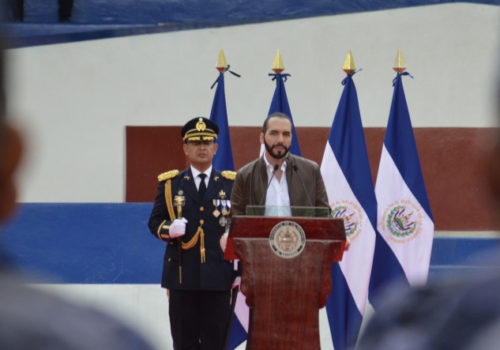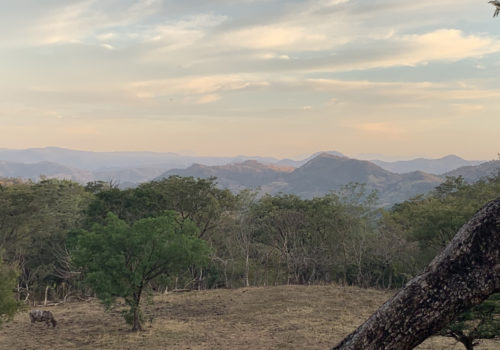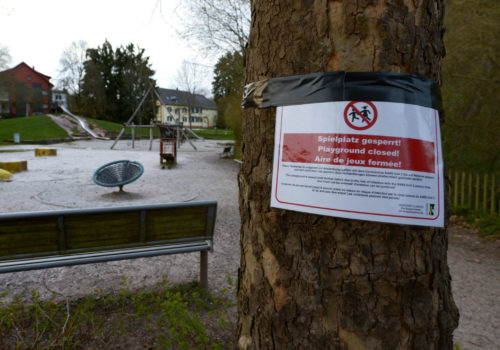SAN SALVADOR — As El Salvador enters its third month of quarantine lockdown, the restrictions are tougher than ever. Only essential workers can go to work (and must show letters from their employers at police checkpoints). The rest of us can leave our homes only on certain days of the week, corresponding to the last digit of everyone’s official unique identity document (known as a “DUI”), and only for going to the grocery store, pharmacy or bank. Public transportation has been banned, face masks are required and traveling from one municipality to another is forbidden. Factories and businesses have been shut down in what some say are acts of retaliation against political opponents.
Meanwhile, President Nayib Bukele has been engaged in a power struggle with the other branches of government, which intensified when a state of emergency declared by the Legislative Assembly expired on May 16. After parliament refused another extension and declared its intention to draft its own quarantine-related legislation, he responded by unilaterally declaring a state of emergency for another 30 days.
Attorney General Raúl Melara announced the action to be unconstitutional and vowed to challenge the executive order in the constitutional court. But Bukele has already refused to honor previous rulings by the highest court in the land, so it is unclear what can be done to meaningfully challenge his decision.
The president’s moves have drawn criticism from the US and international press as well as the United Nations. Members of the US House Foreign Relations Committee published an open letter urging him to respect the constitution and human rights, but the news was overshadowed by an exchange of glowing tweets between Bukele and President Donald Trump.
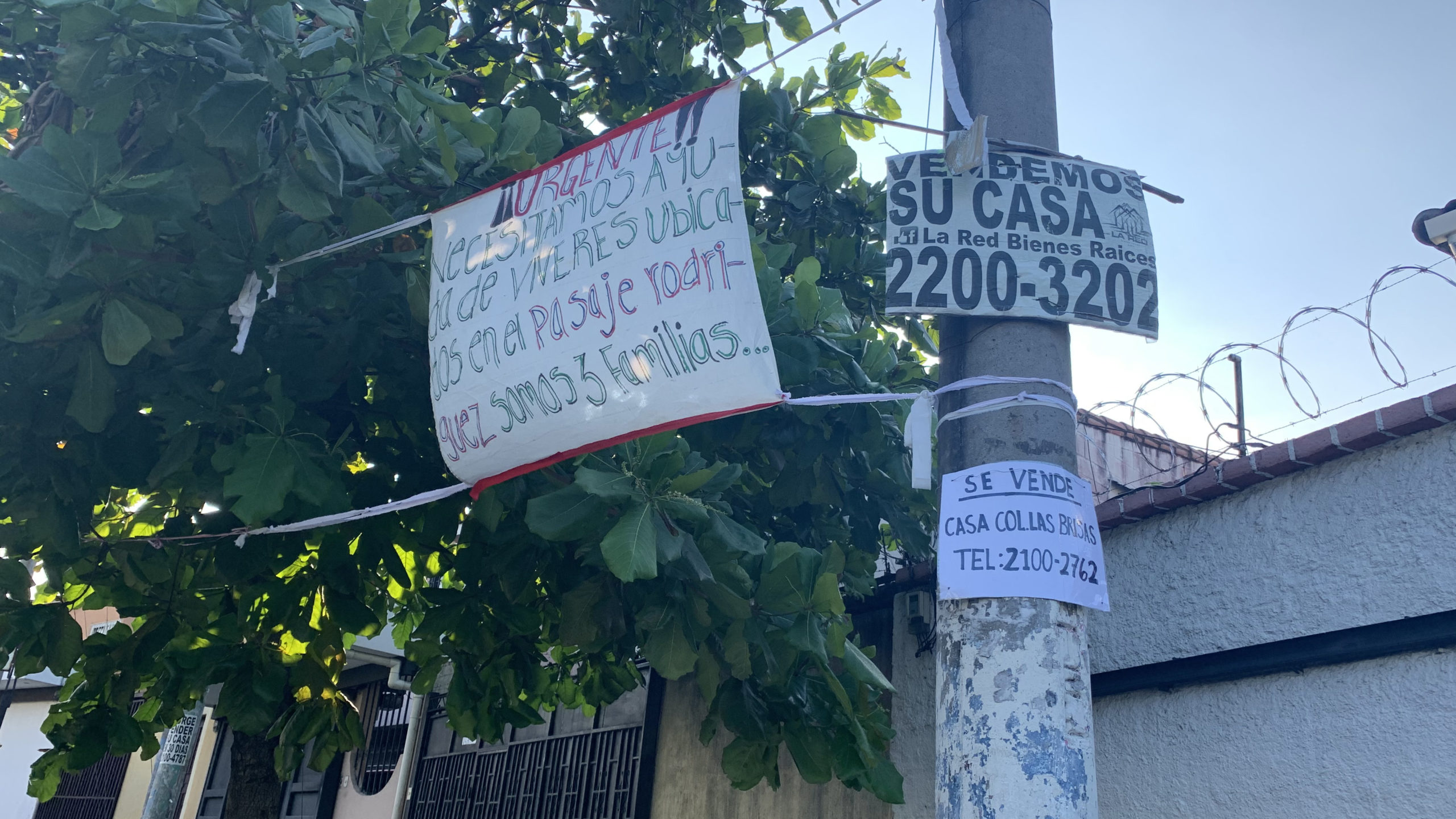
Despite the controversy, and apart from outbreaks in mismanaged quarantine centers that turned into disease hotspots, El Salvador’s lockdown measures appear to have been effective. As of May 18, there were 1,413 confirmed cases of Covid-19 and 30 deaths, a number that is slowly but steadily growing and likely underreported. Few dispute that some quarantine measures must continue in order to keep slowing the spread of the virus and allow the medical system to build additional capacity to treat future patients. Still, Bukele’s actions have prompted reaction from disparate sectors of society worried about a power grab and about the collateral humanitarian and economic consequences of the current lockdown.
It is illegal to gather in groups for a traditional protest, but other forms of dissent and political expression have emerged. People in impoverished, hungry communities have hung white flags or towels outside their houses, sometimes adorned with the words “we need help” or “we need food for our children.” (After granting an initial country-wide $300 subsidy, Bukele also promised food packets would be delivered house to house to approximately 1.7 million people.)
Around the country, particularly in wealthier neighborhoods, there are nightly protests at 8 p.m., with honking car horns and flashing lights. The conflict between Bukele and his critics is also raging on Twitter. One tweet contained a video showing people protesting in cars near the presidential residence, with the caption: “Let’s wake up Layla” (referring to Bukele’s infant daughter). Bukele tweeted his response: “When I saw this video, I felt indignant. Then I remembered that the fathers of many of those who came out to honk, killed priests, raped nuns, sacked our country. What their children are doing is nothing in comparison.”
If Bukele was trying to re-open old wounds by associating his critics with the main perpetrators of the civil war’s violence, he couldn’t have picked a better way.
He was referring to atrocities of this country’s recent civil war, which resulted in the deaths of more than 75,000 Salvadorans—many of them civilians. In the decades that preceded the brutal conflict, any dissent that seemed to advocate the rights of the poor was violently repressed by security forces loyal to the wealthy and powerful, backed by the United States, and whose interests were identified with the Arena Party. During the 1970s and 1980s, religious figures were among those targeted, including four US churchwomen (three nuns and a lay missioner) who were raped and murdered in December 1980 by members of the National Guard and six Jesuit professors at the University of Central America who were killed along with their housekeeper and her daughter in November 1989.
In a country of five million, the wartime losses are comparable to those suffered during the American Civil War or by the British in World War I (according to political scientist Elisabeth Jean Wood, who analyzed the figures in her book Insurgent Collective Action and Civil War in El Salvador). The civilian casualties were significantly higher than in other Latin American countries with high death tolls around the same time, including under the military regimes in Argentina and Chile. The United Nations Truth Commission found that at least 85 percent of the wartime violence was carried out by state agents, and just 5 percent by their opponents, the left-wing FMLN guerrillas. But the Arena-led government enacted an amnesty law just five days after the signing of the peace accords in 1992, foreclosing the possibility of transitional justice and accountability. If Bukele was trying to re-open old wounds by associating his critics with the main perpetrators of the violence, he couldn’t have picked a better way.
Martyrdom and memory
Days before the state of emergency was declared and lockdown began in March, I traveled about an hour north of San Salvador to the town of Aguilares. Here, on the side of a dusty country road, a Jesuit priest named Rutilio Grande and two companions, an old man and a young boy, were killed by security forces in 1977. Grande was at the vanguard of a new Catholic movement known as “liberation theology,” which grew out of the Vatican II reforms of the 1960s and a groundbreaking bishops’ conference in Medellín, Colombia, in 1968.
Liberation theology challenged the church’s traditional message to the poor, which had emphasized acceptance and obedience, promising the faithful would be rewarded for their suffering in the afterlife. The new generation of priests criticized what they saw as an oppressive social order they said caused unnecessary deprivation, advocating reforms to improve people’s lives in the here and now. They also challenged church hierarchies by organizing grassroots Christian Base Communities where lay people came together to worship and discuss the Bible.
Enrique Sánchez Abarca, a former priest and close associate of Grande’s, told me many people in the church opposed the changes. “Just saying the mass in Spanish” instead of Latin was a huge change for them, he said. Grande “was preaching the way the gospel should have been preached,” he added. “But people were used to hearing only the gospel of fear.”
The new church movement’s emphasis on solidarity with the poor and critique of societal inequality was deeply threatening to the oligarchs who were clinging to power and resisting any reform. Attacks on the church by right-wing death squads occurred throughout the 1970s. Several priests and other religious figures were tortured and killed. Flyers circulated with the words: “Be a patriot! Kill a Priest!”

I had traveled to Aguilares on the 43rd anniversary of Grande’s death, when Salvadorans from across the country walked from the memorial site to Grande’s destination: the village of El Paisnal, where he was born and later returned as parish priest. Enterprising individuals sold straw hats by the side of the road under the hot sun. Despite a recent order banning crowds of more than 200 people, National Civil Police officers calmly directed traffic as the procession sang hymns and carried signs.
A few weeks earlier in February, Pope Francis had announced the martyrdom of Grande and the others killed with him. That recognition was the first step on the path toward sainthood, bestowed for either martyrdom or a series of miracles. Grande’s would be the second Salvadoran canonization in Francis’s papacy. (He is the first Jesuit pope and the first from the Americas.)
The first such saint, Monsignor Oscar Romero, was canonized in 2018. The archbishop of San Salvador and a close friend of Grande’s, he lived humbly at a hospice run by Carmelite nuns, where he was shot by a sniper while presiding over a Monday evening mass in 1980. Although the Salvadoran authorities covered up the initial investigation into his death, the UN Truth Commission and other groups later revealed his assassination had been ordered by Arena’s founder Roberto D’Aubuisson and financed by wealthy party supporters with ties to the military. A civil suit brought in California more than 20 years later by an NGO named the Center for Justice and Accountability remains the only court verdict.[1]
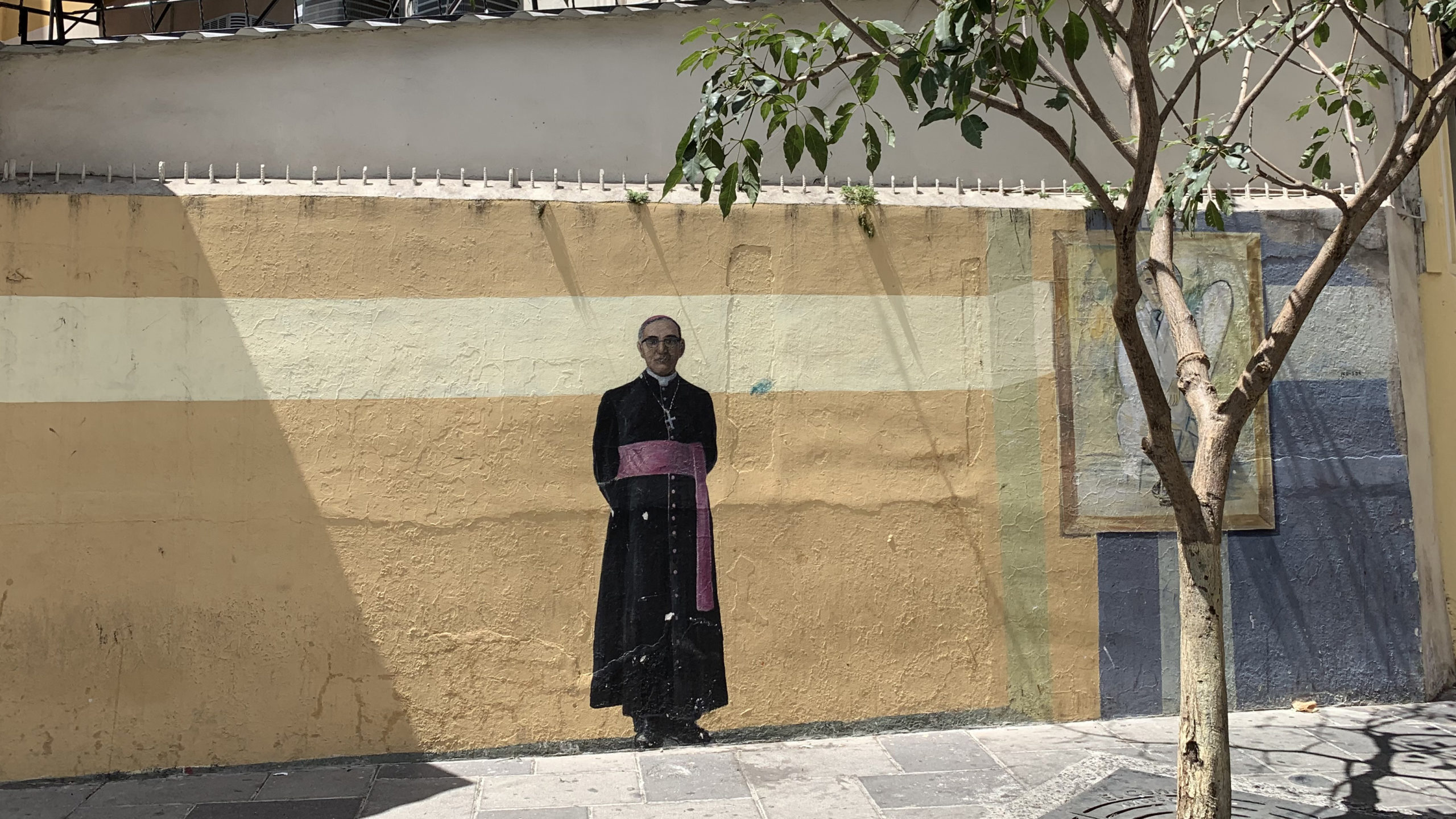
Despite their friendship, Romero did not initially share Grande’s commitment to liberation theology. When he was appointed Archbishop of San Salvador shortly before Grande’s death, he was seen as a conservative choice meant to uphold the status quo. But Grande’s assassination radicalized him. Romero spent the last three years of his life denouncing state-sponsored violence and advocating for the poor. The day before his assassination, he gave a nationally broadcast homily urging soldiers to refuse orders to kill.
Thousands of people attended Romero’s funeral at the San Salvador cathedral. Bombs and gunfire erupted in the square, killing 26 and wounding hundreds, many of them crushed in the panicked crowd.
Romero has since become El Salvador’s most important religious figure. His name now graces the international airport and a section of the Panamerican highway. Catholic churches prominently display his portrait. But by the 40th anniversary of Romero’s death in March this year, the country was on lockdown and plans for elaborate commemorations had been canceled. Although a large oil painting of Romero hangs behind President Bukele during many of his addresses to the nation, he did not mention the anniversary.
At the entrance to El Paisnal, the procession passed a statue of Romero and Grande with arms around one another. The village has remained an FMLN political stronghold nearly three decades after the end of the civil war. Colorful murals depicting the war and triumph of the guerrillas stand along the village’s soccer field. Although the official mass had been canceled due to the coronavirus, the small church was packed. Nuns dispensed hand sanitizer at the entrance like holy water.
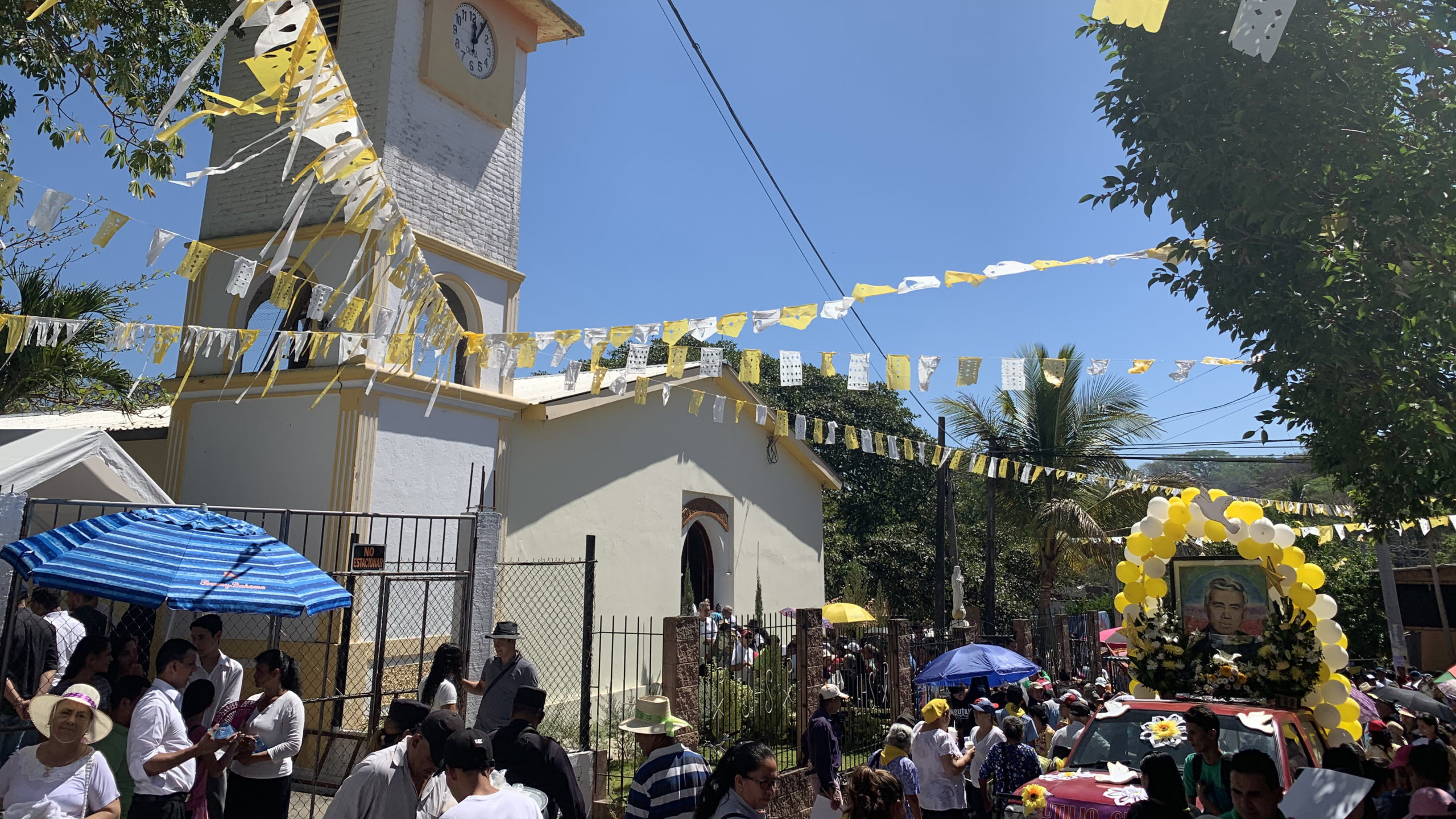
Current implications
The UN negotiated peace accords ending the civil war created the democratic institutions in place today: three branches of government, a civilian police force, restrictions on internal military operations, a human rights ombudsman. Now President Bukele’s refusal to respect those institutions is a threat to El Salvador’s fragile democracy, his critics say. Bukele may be right that honking car horns are nothing like the armed struggles of the past; neither are attacks on Twitter comparable to political murders. Yet his accusations that his critics are “on the side of the virus” and working for the death of Salvadorans recalls the old rhetoric branding priests, nuns and others advocating justice “Communists,” justifying their violent deaths.
On the afternoon of May 18, the constitutional court suspended Bukele’s decree extending the state of emergency and ordered the legislative and executive branches to work together to address the Covid-19 pandemic. Sharing the decision on Facebook, a human rights attorney named Luis Salazar wrote: “With the intercession of Saint Romero of America, the politicians will see the common interest and will arrive at a positive agreement. The rational solution is in their hands: attend to that which is necessary to stop the spread of the pandemic, and not let people die of hunger: the defense of life above all else.”
Others are less hopeful. Bukele refused to back down and immediately announced his intention to appeal to the Inter-American Court of Human Rights, a move legal scholars agree is unlikely to be successful. “If Grande and Romero were here today, what would they say?” Sánchez Abarca asked me over the phone. He left the question unanswered. “I am afraid we are returning to the past. The president is governing through fear and people are afraid. No one knows what’s coming next.”
[1] A detailed account of the lawsuit and its historical context are contained in the book Assassination of a Saint by the attorney Matt Eisenbrandt.

